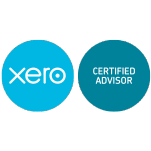Business Plans
The environment in which we work is constantly changing, and running a business is becoming more and more challenging. Quite simply, planning significantly increases your chances of success. If you don’t have a business plan, now is a good time to plan for and think about the future of your business. Businesses do not plan to fail, however, many businesses fail because the owners have failed to think about how their business will survive beyond the next month, focusing more on getting by on a day-to-day basis.
Why bother with a business plan?
- A business plan keeps everyone working towards common goals, rather than doing their own thing.
- It helps you focus on what is important to business success, rather than trying to build a business by reacting to short-term whims or events.
- It allows you to identify potential problems in advance.
- Also, a bank manager presented with an up-to-date business plan will not only be impressed by your management abilities but can understand your financial needs properly and process the paperwork quickly.
Types of business plans
There are two types of business plans:
Short-term plans
- These cover the next 1-3 years and contain a detailed action plan for sales, production, human resources, finance, etc. The action plan should tie in with budgeted cash flows, projected profits, and investment in plants, debtors, and stock.
Longer-term plans
- These cover 3 or more years. They spell out the direction of a business and the key ways in which its aims will be achieved.
Short-term (12-month) plan
Typical content of a 12-month plan includes:
Executive summary
What are the key goals that the business will achieve over the following 12 months in terms of sales dollars, new products, gross profit, return on investment, etc?
This year compared to the last year
What are the major changes that will impact profits, cash flows, and returns on investment?
Detailed action plans
Marketing – market share, new product launches, better marketing efforts.
Production – new equipment, lower unit costs, etc.
Personnel – recruitment, over time, new management appointments.
Finance – cash flow, profit and loss statements, and balance sheets.
Systems – what better systems are planned?
Contingency plans
Should a major event occur, what fall-back plans do you have in place?
Long-term (3-year) plan
Typical content of a 3-year plan includes:
Business background
Ownership – how long has the business been operating?
What are its services/products?
How is it organized?
What is its track record in marketing and production?
What is its current financial position?
Strengths and weaknesses
What are the good points – products, market penetration, location, key people? What are its weak points – management methods, lack of skilled personnel, lack of funds, too much reliance on one customer or one product? Is there too much reliance on one key staff member?
General business outlook
What is happening, or is likely to happen, that will improve the business or its competitors – eg new buying habits, the impact of technology, or a changing population?
Opportunities and threats
After considering the business outlook, what could be the advantages for your business? What potential problems might there be for your business?
Targets and strategies
Set initial business targets for your size, growth, market share, personal rewards, use of technology, the type of employer you want to be, etc. Work out ways in which you could achieve those targets (taking into account the strengths and weaknesses of your business now), and the likely opportunities and threats you will face over the coming years. Select the methods preferred and create an action plan that provides links to what needs to be done in the coming year.
Action plan
Set out the key actions on a year-by-year basis, and develop a broad financial picture of the cash flows, profitability, and sales that should result from the achievement of the key actions.
How to use the plan
With the short-term plan, you can monitor actual performance monthly, and by comparing it with the actual performance you can identify any problems.
Action should then be taken to bring the business back on target. If adverse trends are detected, such as continuous shortfalls in sales, crises can be quickly averted.
How to get started
- Talk to us.
- Once you are committed to developing a plan for your business we will be pleased to assist.
- Remember, when the plan is finalized it will be up to you to use it effectively to get the best out of your business. However, we will always be on hand to help when needed.
- A plan does not need to be complicated or require volumes of pages. A good start is to write down what you are doing, why you are doing it, and how you could do it better.
- A plan can be written on the back of an envelope. The most important aspect of the plan is to start you thinking about how you are going to keep your business going and make money.
See Us First
- Before making any financial decisions.
- To assist you in meeting the necessary legal or financial requirements.
- If you consider that any of the issues contained in this fact sheet may affect you.


